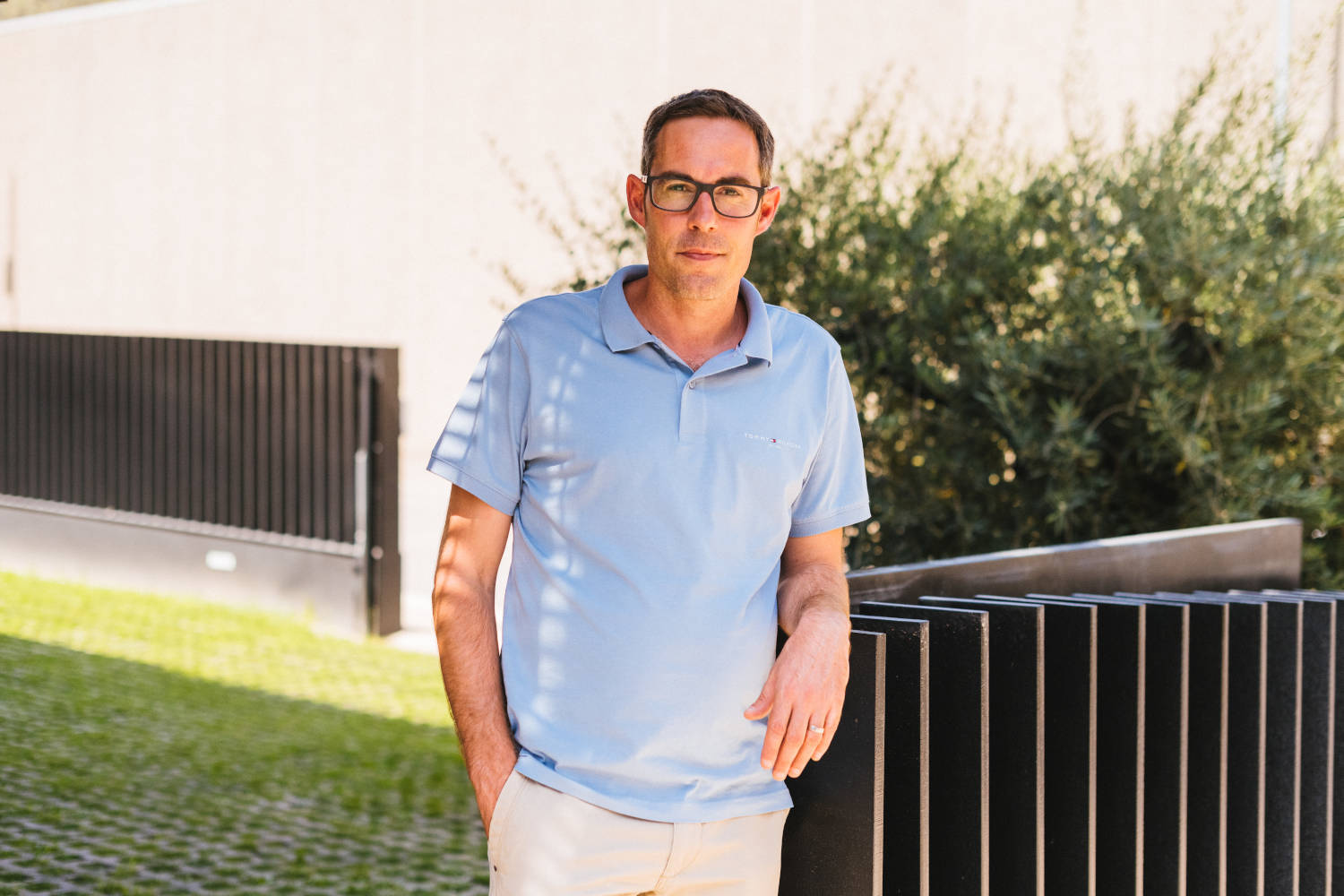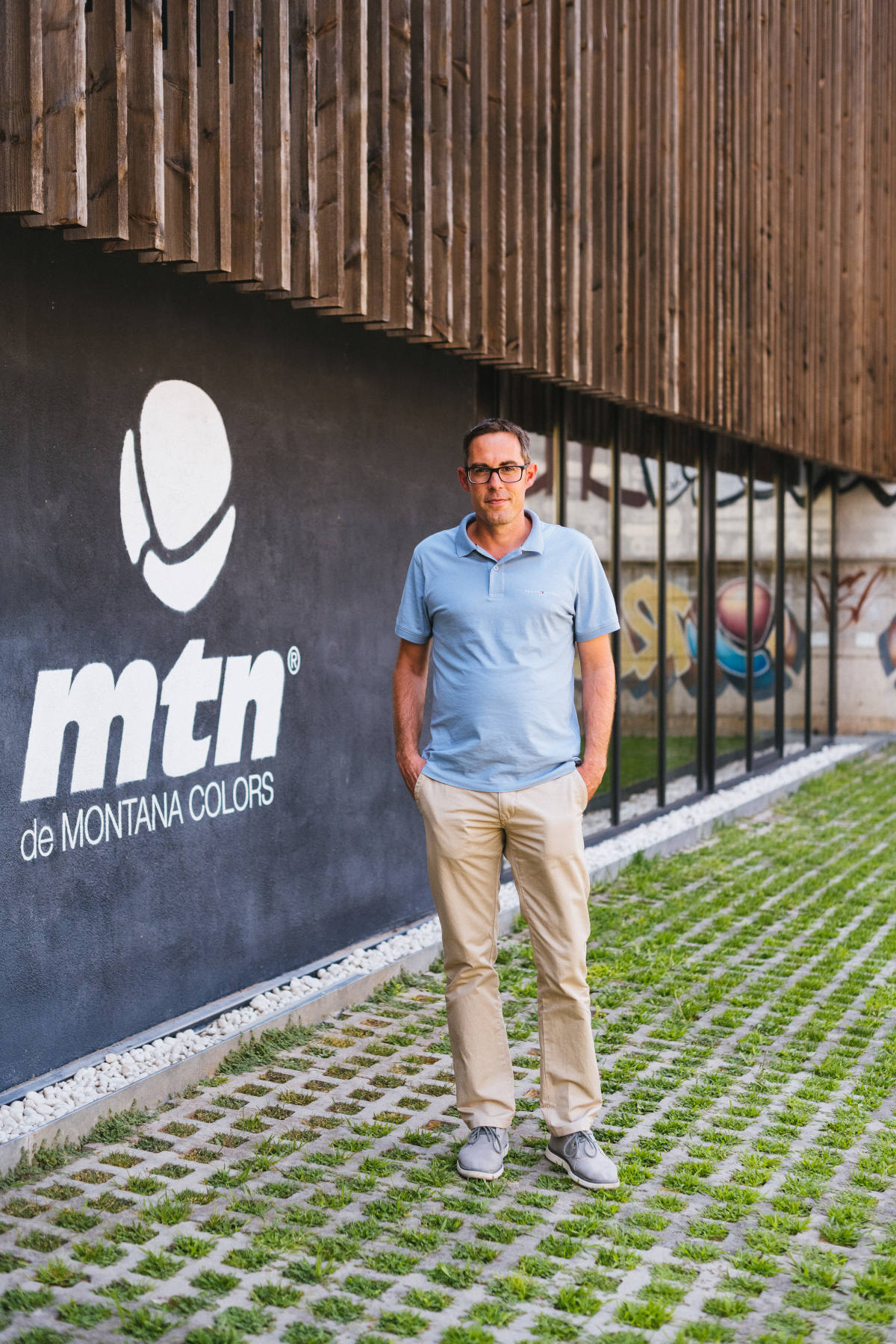- About MTN
Would you like to stay up to date on the latest MTN world news? Products, graffiti, murals, festivals, art and much more.
Return "The future depends on each one of us" Interview with Jordi Portella, laboratory technical director.
Montana Colors has been built and is built thanks to a sum of individualities: the effort and perseverance of many people. In this interview we focus on the figure of Jordi Portella, technical laboratory director and a key figure in the history of the company for 18 years. He opens the doors to a fundamental but little known part of Montana Colors: the technical department.
What is the role of a laboratory technical director?
Essentially, the role of a technical director is to manage the resources and activities of the Technical Department's areas in order to achieve set plans efficiently and effectively.
Many people might think that laboratory work in a company like Montana is sporadic. Can you explain why this is an ongoing job?
In our laboratory we work on medium- to long-term projects, such as new product development, improvements to existing products, and raw material testing, as well as short-term projects, like optimizing manufacturing processes, trade samples, and other activities. However, they are always activities that serve other departments at the company, such as Marketing, Sales, Operations, Purchasing, and Regulatory. In many of these cases, this work falls within a cycle of continuous improvement from which new opportunities and, as a result, activities to be completed will always appear one way or another.
Which people usually interact with you? Can you summarize the general running of the laboratory? (staff involved and what each team is responsible for)
The Technical Department is a department that mainly serves and supports other company departments, as mentioned previously. Therefore, internally we're always interacting with other people in other departments. Externally, we interact with customers when asked to by the Sales Department, and we also communicate with raw material suppliers.
On the other hand, the Technical Department is divided into three main areas: R&D&I, Quality and Regulatory. The R&D&I part is responsible for every aspect related to developing and improving products, trade samples, and raw materials. This is understood as laboratory work. The Quality area oversees all verification procedures for manufacturing processes, while the Regulatory Area manages all matters connected to regulations, labeling, safety data sheets, product registrations, and more.

You joined Montana 18 years ago. What role did Dídac Cerdà play back then? How has your position at this company evolved?
At the time, Dídac was responsible for coordinating all operations at the company. He and Jordi Rubio were the people who gave me the chance to join Montana. Back then, they needed someone to oversee quality management, and that's the position I was hired for. Since then, they entrusted me with other tasks. Back then we had around 50 staff members and given the magnitude of our processes, each person was responsible for several areas of the company. As the company expanded, they suggested I develop my technical skills, which I did, eventually reaching my current position. Over the years, I've learned a lot about the world of paint and sprays with the support of people like Jordi, Miquel, and Dídac, along with other technicians with extensive experience, like Joan, Juan Antonio, and Ramon, who have now retired.
How old were you when you joined? How have you grown personally over the years?
I was 25 years old, I'd just finished university, and I was eager to work. I've changed a lot, both in terms of my technical skills and my soft skills. What hasn't changed since my first day, though, is my desire to learn and do my job as well as possible. I love having new challenges and goals to work towards as I don't particularly enjoy monotony at work.
Our sprays have a creative purpose. What's your connection to the world of creativity?
Well, the truth is that outside of work, I don't have much of a connection to creativity. When I was younger, I loved art and drawing, but over time I stopped. I hope I might be able to take it up again at some point in the future. In any case, I've painted the odd object or decorative furnishing at home with my daughters using MTN products.

How's the white coat?
Haha, white? You mean splattered. It's difficult to keep my coat white in the laboratory. There's always a splash when you least expect it. I have a story, something that often happens to me unfortunately: I'll wear a relatively new item of clothing to work and it inevitably gets splattered on the same day. That's just part of the job, I guess.
What do you think the future holds for spray paint in the coming years?
The industry, in general, is experiencing a change as it looks for more sustainable solutions for existing products and processes, while there are also many regulatory changes being introduced. Both will see products altered one way or another and adapted to suit these changes.
What do you think the future holds for Montana Colors in the coming years?
Carrying on from the previous question, we need to adapt and evolve our products in line with these changes. We have a bunch of projects on the go that will no doubt pay off in the coming years. The future depends on each of us!
ShareMay 30, 2023
